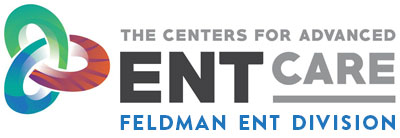Sinus & Nasal Disorders
The sinuses are air spaces located within the face and head.
Each of the 4 groups of sinuses has an opening which provides an outlet for the mucous to drain. This drainage is what allows your sinuses to remain clear. If there is anything that is obstructing the flow, it may lead to mucous buildup and therefore cause inflammation.
Signs and symptoms of sinusitis may include:
- Facial pain or pressure
- Discharge of yellow or green mucus from the nose
- Loss of the sense of smell or taste
- Fatigue
- Bad breath
- Tooth pain
- Difficulty breathing through the nose
- Headache
- Sore throat
- Fever
- Ear pressure
In addition to medical and surgical treatment, Feldman ENT Division offers a variety of non-invasive office based procedures for nasal and sinus disease.
Balloon Sinuplasty
- Baloon sinuplasty is a minimally invasive endoscopic procedure that can be performed in the operating room or in the office setting
- A balloon catheter is inserted into the nose and sinus expand the natural opening of the sinus cavity in order to relieve obstruction and inflammation
Inferior Turbinate Coblation
- Turbinates are bony structures in the nose that are covered with respiratory lining (mucosa). Inferior turbinates are the largest and most anterior of these structures. When enlarged, they can cause nasal congestion and obstruction
- Coblation is a relatively painless procedure, in which a probe is inserted into the inferior turbinates and radiofrequency energy is used to reduce their size
VivAer®
- VivAer is a trademark procedure that uses low energy radiofrequency to remodel and expand the nasal airway
- This procedure can address several causes of nasal obstruction, including inferior turbinate hypertrophy, septal mucosal swelling, and nasal valve collapse
RhinAer®
- RhinAer uses the same low energy radiofrequency as VivAer
- Addresses chronic runny nose and postnasal drip by disrupting the posterior nasal nerve



